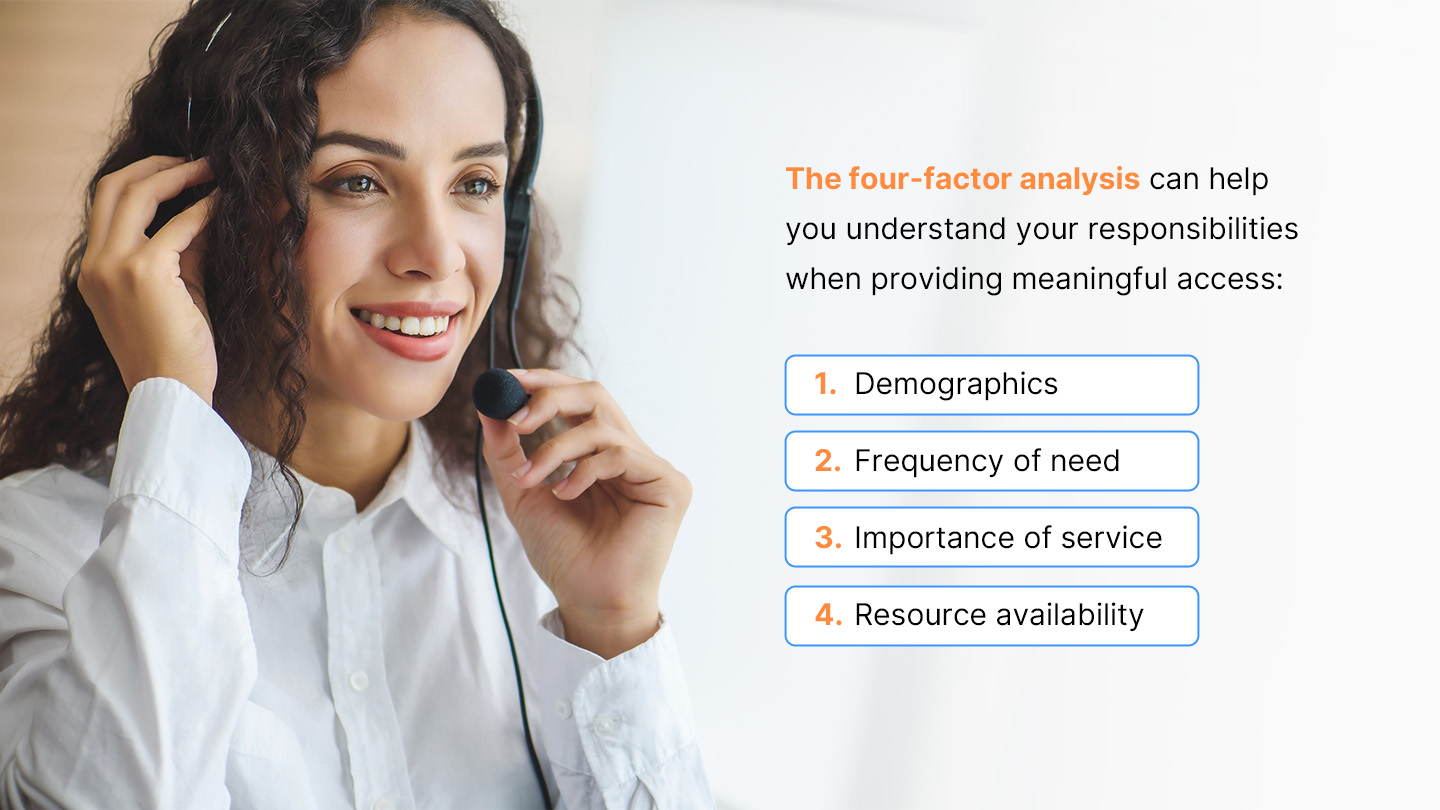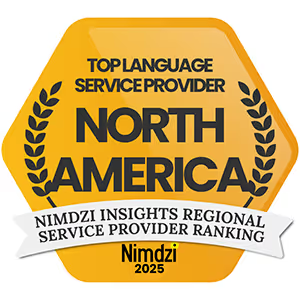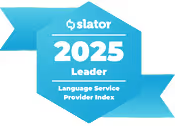Imagine a Cantonese-speaking patient in the emergency room with chest pain. Without immediate access to a qualified medical interpreter, can they accurately communicate their symptoms? Effective communication is central to patient care, especially for clinical and administrative teams. But what happens when language barriers, hearing loss, or vision impairments make communication difficult? Communication barriers can harm patients and prevent healthcare providers from doing their jobs.
Misunderstood medication instructions, incomplete health histories, and missed follow-ups are just a few of the risks. That is where meaningful access comes in. It is a way to reduce medical errors caused by miscommunication, boost efficiency by minimizing delays, improve patient trust, meet legal requirements, and reduce risks.
What Is Meaningful Access to Health Care?
Meaningful access ensures every patient, regardless of language, hearing, or vision ability, can understand, participate in, and benefit from their care just as effectively as an English-speaking patient or an individual without a disability. It is more than providing an interpreter — it ensures that patients get information in a way they can fully grasp. Here are some examples:
- A Deaf patient arriving at the emergency room with chest pain: Without an on-demand American Sign Language (ASL) interpreter, how can they explain their symptoms?
- A Spanish-speaking parent bringing in a child with a high fever: If no interpreter is available, will they understand discharge instructions?
- A patient with vision impairment getting written post-surgery care instructions: If this information is not accessible in an alternative format, how will they be able to follow the critical steps for recovery?
In all these cases, a lack of meaningful access creates confusion, frustration, and potential harm for patients and the healthcare teams responsible for them.
Legal Requirements: What You Need to Know
Health care organizations must provide meaningful access for patients with limited English proficiency (LEP), and patients who are Deaf or hard of hearing or who have vision challenges. Federally funded programs must offer meaningful access under Title VI of the Civil Rights Act, the Americans with Disabilities Act (ADA), and Section 1557 of the Affordable Care Act (ACA), which strengthens protections for patients with disabilities or language barriers.
Ignoring these requirements is a compliance risk. It can lead to poor patient outcomes, misdiagnoses, and legal consequences like lawsuits or malpractice claims.
How Does Technology Support Meaningful Access?
The right tools simplify meaningful access. Video remote interpreting (VRI) is a service that delivers instant, seamless language access. Technology is on-demand at the point of care and takes pressure off your team when they need to discuss care with LEP patients.
1. Instant Access to Qualified Interpreters
VRI and over-the-phone interpreting (OPI) give you immediate access to professional interpreters, ensuring clear communication when and where it is needed:
- VRI: VRI combines video and audio to connect patients with interpreters in real time. It is especially useful for ASL users or in situations where body language and facial expressions are critical.
- OPI: OPI provides fast, reliable interpretation over the phone. This setup makes it ideal for quick conversations, unexpected language needs, or in areas with limited internet access.
2. Data Security and Privacy
While technology improves access, patient privacy should always come first. Healthcare teams must ensure that the tools they use meet strict security and compliance standards, including:
- Secure connections: Reputable VRI and OPI platforms use encrypted networks to prevent unauthorized access.
- HIPAA compliance: Interpreting services follow regulations set by the Health Insurance Portability and Accountability Act to protect sensitive patient information.
- Qualified interpreters: Working with professional, medically trained interpreters reduces the risk of miscommunication and ensures confidentiality.
3. Better Access and Care
By integrating VRI and OPI into your workflow, your team can break down communication barriers, improve patient outcomes, and reduce delays while staying compliant with legal requirements. Technology does not replace human connection. It makes sure every patient has the same opportunity to understand their care, ask questions, and make informed decisions.
How Can Healthcare Facilities Comply?

Ensuring language access and making disability accommodations can feel overwhelming, especially in busy healthcare settings. The four-factor analysis can help you understand your responsibilities when providing meaningful access:
- Demographics: Determine what languages are used most by the communities your facility serves and what percentage of patients needs language services.
- Frequency of need: Assess how often your facility treats patients with LEP, which requires the assistance of a qualified interpreter.
- Importance of service: Establish how language barriers are affecting critical care decisions for healthcare providers.
- Resource availability: Identify the language services your facility currently provides and address any gaps.
For example, a hospital in a diverse urban area sees a high volume of Spanish- and Mandarin-speaking patients. Based on the four-factor analysis, key stakeholders may expand from OPI to VRI services to be more inclusive.
Staff Training
Technology and policies are only meaningful if staff know how to use them to improve workflow and compliance. Front desk staff should know how to identify language needs so they can quickly connect with interpreters. Clinicians need to understand when to use VRI versus OPI and how to navigate these conversations effectively. For example, they might use VRI to streamline language access for a Deaf patient and OPI to schedule an appointment with a Haitian Creole-speaking patient.
Patient-Centered Language Access Plan
A clear, patient-focused language access plan ensures consistency in delivering meaningful access across departments. Healthcare administrators should consider a minimum number of workflows to have coverage for the demand and multiple language needed while having minor redundancies. Empower patients by informing them of their right to meaningful access. Additionally, signage, forms, and discharge instructions should be available in multiple languages and in accessible formats to cater to patients' needs.
Continuous Assessment
Meaningful access needs regular assessments to help identify potential gaps and improve services. This can be done through:
- Tracking interpreter usage to determine where demand is highest.
- Patient and staff surveys that measure effectiveness and satisfaction.
- Policy adjustments as patient demographics change.
- Analysis of the impact of language access on important hospital quality and clinical metrics.
Why Trust Us?
Healthcare technology experts engineered Martti VRI and OPI services. Within 20 seconds or fewer, have access to qualified medical interpreters in the most common languages. We offer over 250 languages, including American Sign Language. You can also translate medical documents, and monitor activity to see language service usage patterns.
Our interpreters all exceed their Interagency Language Roundtable (ILR) Level 3 professional working proficiency. We also offer Martti carts, which work in demanding healthcare environments through their functional design.
Deliver Meaningful Access with Martti
For clinical and administrative teams, communication barriers can slow down care, increase risks, and create frustration for everyone. Supporting patients with diverse communication needs is a core part of quality care. When patients understand their care, everyone benefits.
Martti works through an easy-to-use app, seamlessly integrating with existing EHR software, simplifying high-quality care for your patients. We provide compassion and a capable voice to patients and health care providers across the globe with full compliance with privacy laws like HIPAA. Contact us today to book a demo and improve human communication, which matters most in your healthcare facility.

Linked Sources
- https://www.archives.gov/eeo/laws/title-vi
- https://www.ada.gov/topics/intro-to-ada/
- https://www.hhs.gov/civil-rights/for-individuals/section-1557/fs-limited-english-proficiency/index.html
- https://www.hhs.gov/hipaa/for-professionals/privacy/laws-regulations/index.html
- https://www.martti.io/technology
- https://www.martti.io/interpreters
- https://www.martti.io/devices
- https://www.martti.io/contact










